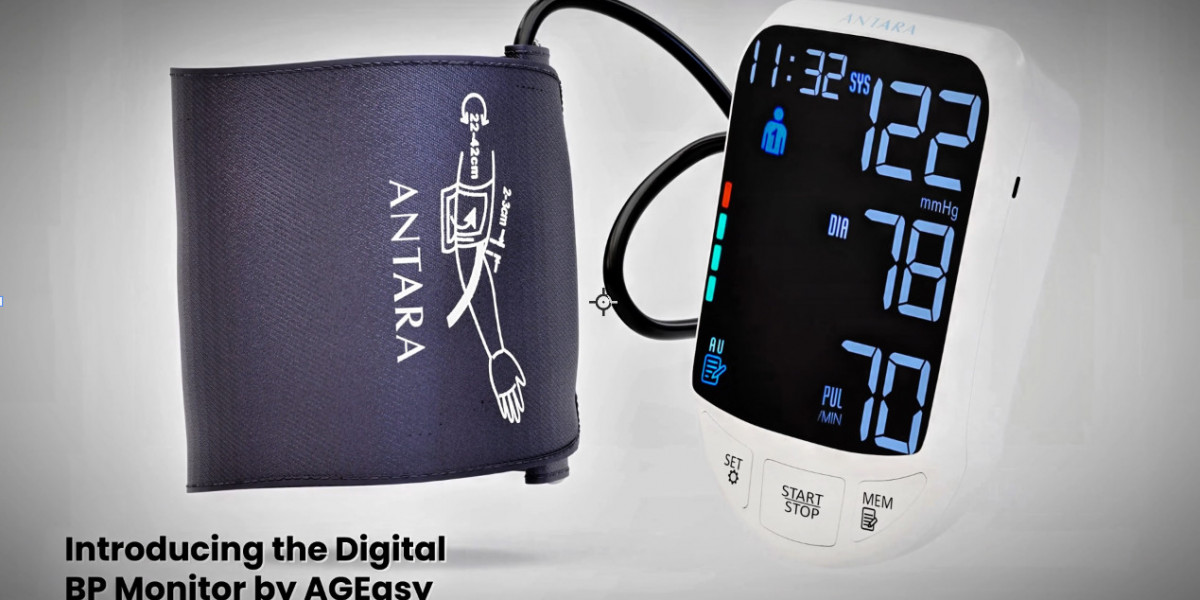Accurate blood pressure readings are vital for managing your health effectively. However, even the most reliable blood pressure machine can produce misleading results if used incorrectly. In this blog post, we explore the top 10 common mistakes people make while using a bp monitor and provide practical tips to ensure you get the most precise measurements. By avoiding these pitfalls, you can take control of your cardiovascular health and make informed decisions about your lifestyle and treatment options.
1. Using the Device Incorrectly
One of the most frequent errors is not following the manufacturer’s guidelines for setting up and using your bp monitor. Whether you’re using a traditional model or a newer bp machine digital, proper placement of the cuff and sitting in the correct position is critical. Often, users forget to rest before taking a reading or neglect to sit with their back supported. Remember, small deviations in your positioning can lead to inaccurate readings, causing unnecessary worry or misplaced reassurance.
2. Skipping the Calibration Process
Calibration is an essential part of maintaining your device’s accuracy over time. A well-calibrated blood pressure monitoring device can give you trustworthy results. Failing to calibrate your unit periodically might lead to drift in measurements. Regular checks with a professional or following the user manual’s instructions for self-calibration will help ensure that your readings remain as precise as possible.
3. Inconsistent Timing for Readings
Another common mistake is not taking your measurements at consistent times. Your body’s blood pressure fluctuates throughout the day due to various factors like stress, meals, and physical activity. It’s recommended to take readings at the same time each day under similar conditions. This consistency will help you track your progress and notice any unusual changes. Make it a habit to record your measurements systematically, which can provide valuable insights during your medical consultations with healthcare providers.
4. Ignoring Environmental Factors
Many people overlook the impact of their surroundings on their blood pressure readings. Factors such as room temperature, noise, and even recent physical exertion can affect your measurement. Ensure you’re in a calm, quiet environment when using your bp monitor. If you’re in a hurry or in a stressful setting, your readings might not truly reflect your normal blood pressure levels. A calm environment is as important as the device itself when it comes to obtaining accurate results.
5. Improper Cuff Size and Placement
Using a cuff that does not fit your arm properly is a mistake that can lead to significant inaccuracies. A cuff that’s too tight or too loose can distort your readings. When selecting a blood pressure machine, make sure to choose one that offers different cuff sizes or to get the correct size for your arm. Additionally, the cuff should be placed on your bare arm and at the same level as your heart for the most reliable measurement. Double-check the manufacturer’s guidelines to ensure proper cuff placement every time.
6. Rushing Through the Process
Taking a few seconds to set up your device correctly might seem trivial, but it’s a critical step that many users skip. A common error is rushing the measurement process, which may result in false readings. Whether you’re using a conventional blood pressure monitoring device or a sophisticated bp machine digital, patience is key. Sit quietly for five minutes before measuring, and ensure you are relaxed and free of distractions.
7. Neglecting Regular Device Maintenance
Regular maintenance is crucial for keeping your monitoring equipment in top condition. Dust, moisture, or wear and tear can affect the performance of your device over time. Be sure to clean the cuff and check the monitor’s battery and connections periodically. Ignoring these small tasks can compromise the reliability of the device, whether you’re using a traditional unit or a modern bp machine digital that may have additional sensors and features.
8. Not Logging Your Readings
Tracking your blood pressure readings over time is an excellent practice for managing your health. Many people make the mistake of not recording their measurements, which makes it difficult to identify trends or patterns. A written log or a digital record on your smartphone can help you and your healthcare provider better understand your blood pressure fluctuations. This ongoing record-keeping is especially important if you’re managing conditions that require careful monitoring.
9. Over-Reliance on One Reading
Another pitfall is relying on a single measurement to assess your health. Blood pressure can vary due to many factors, so it’s essential to take multiple readings during one session and average the results. Don’t panic over a one-time high or low reading. Instead, use multiple measurements to establish a more reliable baseline. This approach applies regardless of whether you’re using a bp monitor or any other method of self-assessment.
10. Not Consulting a Professional
Finally, many individuals make the mistake of not seeking professional advice when their readings are consistently off. While home monitoring is a useful tool, it should not replace regular consultations with your healthcare provider. If you notice significant changes or if your readings remain abnormal over a period of time, it’s crucial to get professional input. A doctor can help determine whether your technique needs adjustment or if there is an underlying issue that requires further investigation.
Final Thoughts
In summary, taking accurate blood pressure readings at home is not just about owning a device—it’s about using it correctly. Whether you are a seasoned user of a blood pressure monitoring device or just started using one, being aware of these common mistakes can help you ensure that your readings are both accurate and reliable. Inaccurate readings can lead to unnecessary anxiety or false reassurance, which may impact your overall health management strategy.
Taking the time to understand your equipment, maintain consistency in your routine, and record your data carefully are key practices for reliable self-monitoring. Additionally, investing in a well-reviewed bp machine digital can enhance your monitoring experience by providing more detailed insights and advanced features that simplify the process.
By avoiding these 10 common pitfalls, you set yourself up for success in managing your blood pressure effectively. With a little extra care and attention to detail, you can make the most out of your device and take a proactive approach to your heart health. Remember, technology is here to assist you, but your vigilance and proper usage are what ultimately make the difference.
Stay informed, stay consistent, and consult your healthcare provider regularly to ensure you are on the right track with your blood pressure management. Embrace these best practices, and let your journey toward better health be as smooth and effective as possible.







